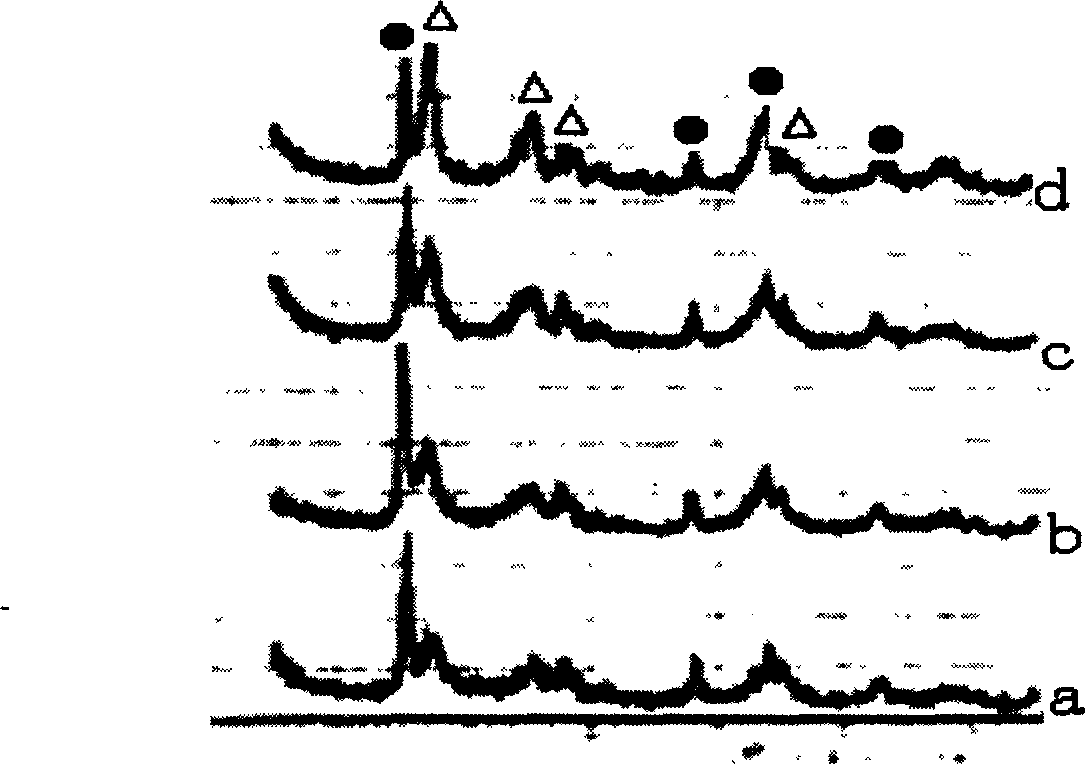Preparation of nanometer composite light catalyst
A nano-composite, photocatalyst technology, applied in catalyst activation/preparation, physical/chemical process catalysts, chemical instruments and methods, etc., can solve the problems of high specific surface and pore volume of xerogels, complex equipment, and difficult conditions. , to achieve good stability and catalytic activity, enhance charge separation, and inhibit recombination
- Summary
- Abstract
- Description
- Claims
- Application Information
AI Technical Summary
Problems solved by technology
Method used
Image
Examples
Embodiment 1
[0040] Implementation Example 1: Measure a certain amount of dilute titanium sulfate solution, and weigh Fe(NO) in a molar ratio of Ti:Fe to be 1:0.15 3 Add to titanium sulfate solution, add 10ml AEO-3 and stir for 3 hours, titrate with sodium hydroxide to pH 8-9, get hydrogel, age for 16 hours, wash by centrifugation, exchange water with methanol, move to high pressure reaction Supercritical reaction was carried out in the kettle to obtain airgel powder, and the obtained powder was calcined in a muffle furnace at 500°C for 1 hour to obtain a nanocomposite photocatalyst, and the degradation rate of phenol was measured. Under lamp irradiation, the degradation rate of 100ppm phenol after 6 hours is 81%, and the particle size measured by XRD and TEM is 12nm.
Embodiment 2
[0041] Implementation Example 2: Take 20ml of isopropyl titanate liquid and dissolve it in 80ml of absolute ethanol. The molar ratio of Ti:Ce is 1:0.03, and take Ce(NO) 3 Add the solution to the above solution, add 3ml of triethanolamine, stir vigorously for 3 hours, drop potassium hydroxide until the pH is 8-9, age for 10 hours, wash by centrifugation, replace the solvent with ether, and move it to a high-pressure reaction kettle. Supercritical reaction to obtain airgel powder, calcining the obtained powder in a muffle furnace at 600 ° C for 1 h to obtain a nanocomposite photocatalyst, and measuring the degradation rate of the mixture of chloroform and carbon tetrachloride, Under the irradiation of 9w, 365nm ultraviolet lamp, the degradation rate of 300ppm trichloromethane and carbon tetrachloride mixed solution reaches 56% after 8 hours, and the particle size measured by XRD and TEM is 25nm.
Embodiment 3
[0042] Implementation Example 3: Measure 10ml of n-butyl titanate liquid and dissolve it in 50ml of absolute ethanol. Measure Zn(NO 3 ) 2 Add the solution to the above solution, add 12g of polyethylene glycol, stir vigorously for 2 hours, add sodium carbonate until the pH is 8-9, age for 20 hours, centrifuge and wash, replace the solvent with ethane, and move to a high-pressure reactor Perform supercritical reaction to obtain airgel powder, calcinate the obtained powder in a muffle furnace at 600° C. for 1 h to obtain a nanocomposite photocatalyst, and measure the degradation rate of methyl orange. Under the irradiation of 9w, 365nm ultraviolet lamp, the degradation rate of 100ppm methyl orange solution reaches 96% after 2 hours, and the particle size measured by XRD and TEM is 8nm.
PUM
| Property | Measurement | Unit |
|---|---|---|
| temperature | aaaaa | aaaaa |
| critical temperature | aaaaa | aaaaa |
| critical temperature | aaaaa | aaaaa |
Abstract
Description
Claims
Application Information
 Login to View More
Login to View More - R&D
- Intellectual Property
- Life Sciences
- Materials
- Tech Scout
- Unparalleled Data Quality
- Higher Quality Content
- 60% Fewer Hallucinations
Browse by: Latest US Patents, China's latest patents, Technical Efficacy Thesaurus, Application Domain, Technology Topic, Popular Technical Reports.
© 2025 PatSnap. All rights reserved.Legal|Privacy policy|Modern Slavery Act Transparency Statement|Sitemap|About US| Contact US: help@patsnap.com


